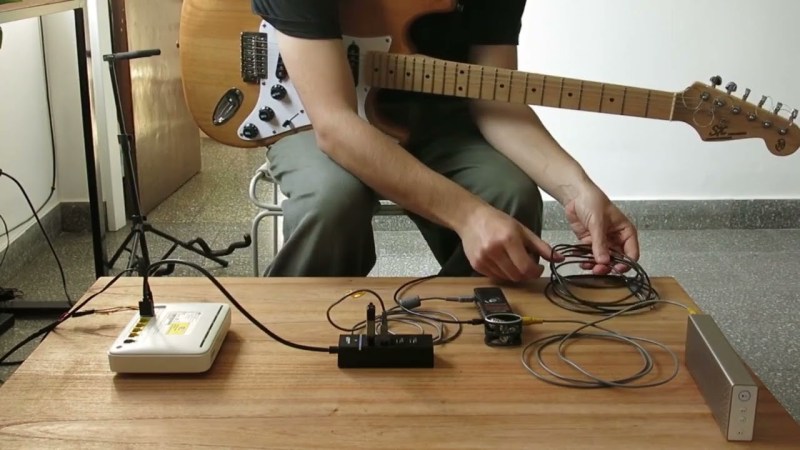Moore’s law might not be as immutable as we once though thought it was, as chip makers struggle to fit more and more transistors on a given area of silicon. But over the past few decades it’s been surprisingly consistent, with a lot of knock-on effects. As computers get faster, everything else related to them gets faster as well, and the junk drawer tends to fill quickly with various computer peripherals and parts that might be working fine, but just can’t keep up the pace. [Bonsembiante] had an old ADSL router that was well obsolete as a result of these changing times, but instead of tossing it, he turned it into a guitar effects pedal.
The principle behind this build is that the router is essentially a Linux machine, complete with ALSA support. Of course this means flashing a custom firmware which is not the most straightforward task, but once the sound support was added to the device, it was able to interface with a USB sound card. An additional C++ program was created which handles the actual audio received from the guitar and sound card. For this demo, [Bonsembiante] programmed a ring buffer and feeds it back into the output to achieve an echo effect, but presumably any effect or a number of effects could be programmed.
For anyone looking for the source code for the signal processing that the router is now performing, it is listed on a separate GitHub page. If you don’t have this specific model of router laying around in your parts bin, though, there are much more readily-available Linux machines that can get this job done instead.

















It´s not a “custom firmware” it´s a stock OpenWRT, no black magic reverse engineering or voodoo involved, just grab the image from OpenWRT website and follow the instructions.
The real work was writing the effect. As a consequence one can take this source and patch OpenWRT and get the same on almost any of the dozens (having USB port(s)) of supported OpenWRT gizmos.
Hi ono! This is actually a custom firmware, and it’s not an OpenWRT version. I would love to have an OpenWRT image to this router. I had to modify a stock TPLink firmware. I recompiled the kernel from the GPL source code and reflashed in the partition. It is on the post.
openwrt is actually a “custom firmware”…
ok, it’s just a program in a arm sbc. but the fact that this sbc is a junk modem is pretty cool.
p.s.: apparently he started from a modified tp-link image, no openwrt involved.
Amazing what you can find out, if you read the article :P
🤣
I was hoping to see the fancy DSL DSP hardware used, not use a linux SoC as a linux SoC.
Between the USB port and the excellent selection of Linux kernel drivers, it’s only natural to repurpose these old routers. If you have some USB gizmo that you need to run then it’s a great solution. you can put them on your network via either wifi or Ethernet, they have low power consumption and they usually come with UL listed power supplies.
I suspect, but don’t know, that at this stage in development, the “fancy DSL DSP hardware” is an totally integrated DSL modem chip, which does that job (and no other) extremely well at low cost. The one I worked on may years ago, used an Alcatel MTK-20156. It’s pretty much “data in/ADSL out”. However, there *was* also a TI TMS320 DSP on the board to do the POTS digitization…that may have possibilities.
Moore’s Law immutable? Who thought that? It was never anything more than an empirical obsevation that conformed to reality for a while, despite the BBC’s Horizon programme using the same film of an exploding microwave oven that they used for the Y2K bug when they wanted another doomsday scenario.
Moore’s Law resembled the Microsoft Effect, where the efficiency of the operating system declines, requiring faster processors and more memory with each new release owing to their sloppy programming style (something that made its way over to Linux ultimately, though not to the same extent thankfully). Somewhat similar to Parkinson’s Law for computing power.
This is really impressive! I’ll be checking out the code and giving it a try myself.